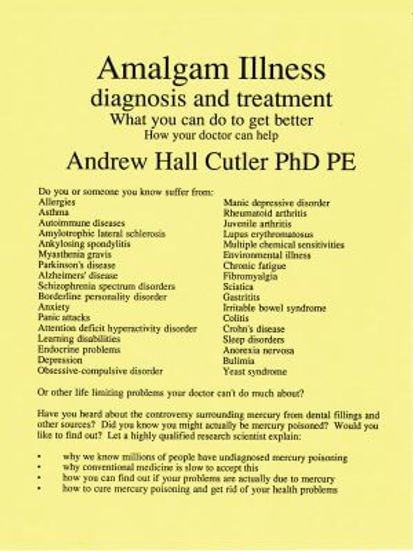Andy Cutler starts off his book, Amalgam Illness, by telling us he felt he was very lucky when he got sick. “Not lucky to get sick! That was a terrible experience! But I was lucky to have received exactly the right education before I needed it.” This was a PhD in Chemistry from Princeton in 1985 which he says was “close enough to medicine to be able to read physician’s textbooks, but not close enough to share all the myths and be sure of the things ‘everyone know.’”He says that he wrote this book in order to “get all the information out of his head.” We are grateful that he did!
Amalgam Illness covers everything an exceptionally brilliant scientist learned and figured out about the topic of mercury and related toxicities from the personal experience of someone who was actually poisoned himself.
The book discusses the myriad health conditions mercury can cause with explanations of what is happening on a physiological level and how to relieve symptoms while mercury detoxification proceeds. There is an extensive “materia medica” that lists supplements and medications that may help, and equally important, agents to avoid as they will make you worse.
There is discussion of what clinical laboratory tests you might get actually mean, what other helpful books are that you might use, and explanations of chelating agents, how to use them and how they work.
Andy once remarked that he thought that between 30 and 50% of the population (of the United States at least) have symptoms of mercury toxicity. His insights into the implications of this mass, iatrogenic poisoning for the medical system and for society at large for that matter, are particularly interesting.


